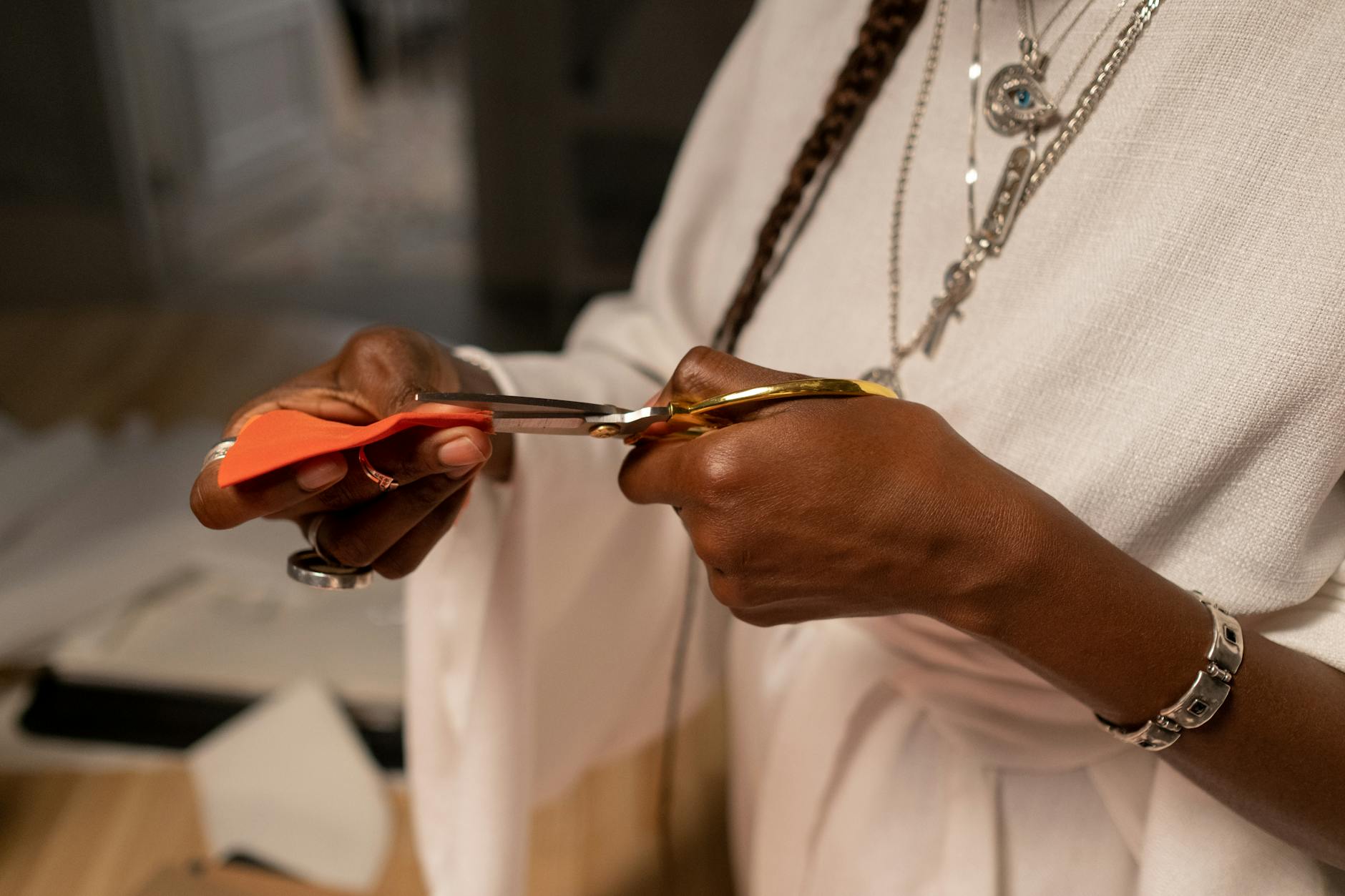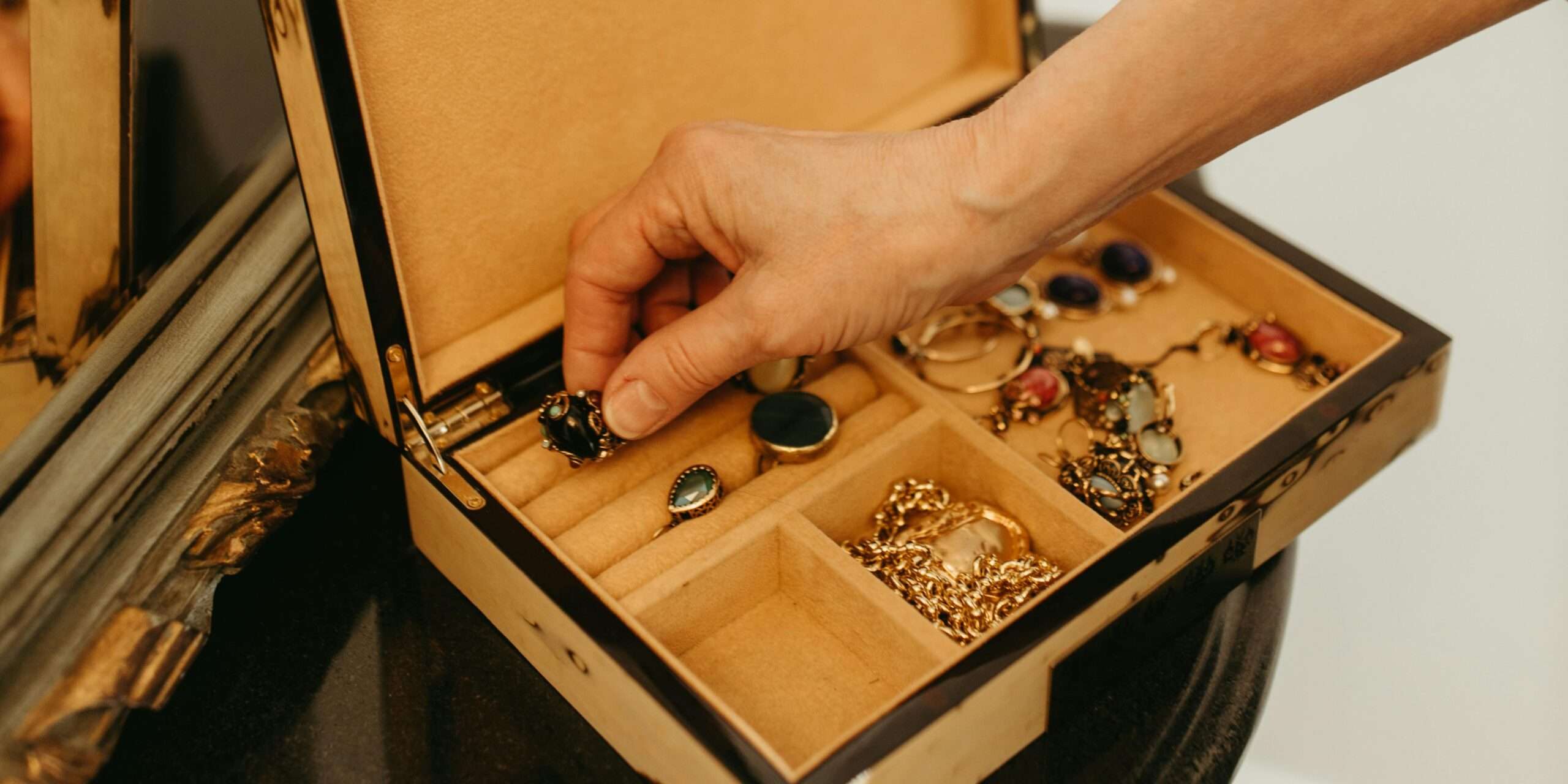Sparkle, shine, and radiance—these are the hallmarks of well-maintained jewelry. But how often have you gazed at your once-gleaming pieces, now dulled by time and wear, and wondered, “Where did that luster go?” 🤔💎
The truth is, jewelry care isn’t just about preserving beauty; it’s about protecting your investments and cherishing your memories. Whether it’s a family heirloom, a symbol of love, or a personal indulgence, your jewelry deserves more than just being worn—it deserves to be cared for. But with so many different materials and delicate designs, knowing how to properly maintain your precious pieces can feel overwhelming.
Fear not, fellow jewelry enthusiasts! We’re about to embark on a sparkling journey through the world of jewelry care. From daily cleaning habits to material-specific techniques, protective measures, and even restoration tips, we’ll cover everything you need to know to keep your jewelry collection dazzling for years to come. So, polish up your curiosity and let’s dive into the shimmering secrets of jewelry care! ✨💍
Maintaining your jewelry’s sparkle and shine is easier than you might think. By incorporating these simple everyday cleaning habits into your routine, you can keep your precious pieces looking their best for years to come.
A. Gentle wiping after each wear
After wearing your jewelry, take a moment to gently wipe each piece with a soft, lint-free cloth. This quick action removes oils, sweat, and other residues that can accumulate throughout the day. For different types of jewelry, consider the following:
Precious metals (gold, silver, platinum): Use a microfiber cloth
Gemstones: Dampen the cloth slightly with lukewarm water
Pearls: Use a dry, soft chamois cloth
B. Proper storage techniques
Storing your jewelry correctly is crucial for preventing damage and maintaining its beauty. Here’s a handy table to guide you:
| Jewelry Type | Storage Method |
|---|---|
| Necklaces | Hang on hooks or lay flat to prevent tangling |
| Rings | Use individual compartments or ring holders |
| Earrings | Store in a sectioned jewelry box or on an earring stand |
| Bracelets | Lay flat or use bracelet stands |
Remember to keep pieces separate to avoid scratching and store them in a cool, dry place away from direct sunlight.
C. Avoiding harmful substances
To protect your jewelry from damage, be mindful of the following:
Remove jewelry before:
Swimming (chlorine and saltwater can be damaging)
Applying lotions, perfumes, or hairsprays
Doing household chores
Exercising or engaging in sports activities
Avoid exposing your jewelry to:
Harsh chemicals
Extreme temperature changes
Direct sunlight for extended periods
By following these everyday cleaning habits, you’ll ensure that your jewelry remains beautiful and well-maintained. Now that we’ve covered the basics of daily care, let’s explore some deep cleaning methods for those times when your jewelry needs a more thorough refresh.
Now that we’ve covered everyday cleaning habits, let’s dive into more thorough cleaning techniques to keep your jewelry sparkling.
A. Professional cleaning services
Professional jewelers offer specialized cleaning services that can restore your pieces to their original luster. These experts use advanced techniques and equipment to clean even the most delicate items safely.
B. DIY cleaning solutions
For those who prefer a hands-on approach, here are some effective DIY cleaning solutions:
Mild soap and warm water
Baking soda paste
Vinegar and water mixture
Ammonia solution (for certain metals)
| Solution | Best for | Caution |
|---|---|---|
| Mild soap | All jewelry | Avoid harsh detergents |
| Baking soda | Gold, silver | Not for soft stones |
| Vinegar | Silver | Avoid on pearls or opals |
| Ammonia | Diamonds, gold | Use sparingly, well-ventilated area |
C. Ultrasonic cleaning devices
Ultrasonic cleaners use high-frequency sound waves to remove dirt and grime from jewelry. They’re particularly effective for intricate pieces with hard-to-reach areas.
D. Frequency of deep cleaning
The frequency of deep cleaning depends on how often you wear your jewelry and the environments it’s exposed to. As a general rule:
Frequently worn pieces: Deep clean every 3-6 months
Occasional wear: Annual deep cleaning
Special occasion jewelry: Clean before and after each use
With these deep cleaning methods in your arsenal, you’ll be well-equipped to maintain your jewelry’s brilliance. Next, we’ll explore specific care techniques for different types of materials used in jewelry making.

Material-Specific Care
Now that we’ve covered general cleaning methods, let’s dive into the specifics of caring for different types of jewelry materials.
Gold Jewelry Maintenance
Gold jewelry requires gentle care to maintain its luster. Clean your gold pieces with warm, soapy water and a soft brush. Avoid harsh chemicals and abrasive materials that can scratch the surface. For added protection, store gold jewelry separately to prevent scratches.
Silver Tarnish Prevention
Silver is prone to tarnishing, but with proper care, you can keep it shining. Use a silver polishing cloth regularly to remove tarnish. For stubborn tarnish, try a silver cleaning solution. To prevent tarnish, store silver in airtight bags or containers with anti-tarnish strips.
Gemstone Protection
Different gemstones require specific care. Here’s a quick guide:
| Gemstone | Care Tips |
|---|---|
| Diamonds | Clean with mild soap and water, avoid harsh chemicals |
| Rubies & Sapphires | Use warm, soapy water and a soft brush |
| Emeralds | Avoid ultrasonic cleaners, use only mild soap and water |
| Opals | Clean with a damp, soft cloth; avoid heat and chemicals |
Pearl Preservation
Pearls are delicate and require special attention. Clean them with a soft, damp cloth after each wear to remove oils and dirt. Never use harsh chemicals or ultrasonic cleaners on pearls. Store them separately in a soft cloth or pouch to prevent scratches.
Costume Jewelry Upkeep
Costume jewelry often contains various materials and may tarnish quickly. Clean with a soft, dry cloth and avoid water or chemicals. Store in airtight containers with silica gel packets to absorb moisture and prevent tarnish.
Next, we’ll explore how to protect your jewelry from damage and wear during everyday activities.

Protecting Your Jewelry
Now that we’ve covered cleaning methods, let’s focus on how to protect your precious jewellery from damage and loss.
A. Removing before activities
To ensure your jewellery stays in pristine condition, it’s crucial to remove it before engaging in certain activities:
Swimming (chlorine and saltwater can damage metals and gemstones)
Exercising or playing sports
Household chores (cleaning products can be harmful)
Showering or bathing
Applying makeup or lotions
B. Safe travel practices
When traveling with your jewellery, follow these tips to keep it secure:
Use a dedicated travel case with separate compartments
Pack jewellery in your carry-on luggage, never in checked bags
Consider leaving valuable pieces at home or in a hotel safe
Document your jewellery with photos and descriptions before traveling
| Travel Tip | Benefit |
|---|---|
| Use travel case | Prevents tangling and scratching |
| Pack in carry-on | Reduces risk of loss or theft |
| Leave valuables at home | Ensures peace of mind |
| Document pieces | Aids in recovery if lost or stolen |
C. Insurance options
Protecting your jewellery financially is just as important as physical protection. Consider these insurance options:
Homeowners or renters insurance (often with limited coverage)
Specialized jewellery insurance policies
Scheduled personal property coverage (as an add-on to existing policies)
When choosing insurance, ensure it covers:
Loss
Theft
Damage
Mysterious disappearance
Next, we’ll explore how to repair and restore your jewellery when prevention isn’t enough.

Repairing and Restoring
Identifying damage early
Catching jewelry damage early is crucial for maintaining the longevity and beauty of your precious pieces. Regular inspections can help you spot issues before they become more severe. Here’s a checklist to help you identify common jewelry problems:
Loose stones or settings
Scratches or dents on metal surfaces
Tarnish or discoloration
Bent or misshapen components
Broken clasps or closures
DIY repair techniques
While some repairs require professional attention, there are several simple fixes you can attempt at home:
Tightening loose stones: Use a toothpick to gently push the prongs back into place.
Removing tarnish: Create a paste with baking soda and water, apply it to the jewelry, and rinse thoroughly.
Fixing a kinked chain: Carefully straighten the chain using tweezers or a pin.
| DIY Technique | Materials Needed | Difficulty Level |
|---|---|---|
| Tightening stones | Toothpick | Easy |
| Removing tarnish | Baking soda, water | Medium |
| Fixing kinked chain | Tweezers or pin | Medium |
When to seek professional help
While DIY techniques can be effective for minor issues, some repairs are best left to professionals:
Resizing rings
Replacing missing stones
Repairing broken clasps or chains
Restoring heavily damaged or antique pieces
Remember, attempting complex repairs without proper knowledge and tools can lead to further damage. When in doubt, always consult a certified jeweler to ensure your precious pieces receive the care they deserve.
As we move forward, let’s explore some preventive measures to protect your jewelry and minimize the need for repairs in the future.

Caring for your jewelry is essential to maintain its beauty and value for years to come. By incorporating simple everyday cleaning habits, utilizing proper deep cleaning methods, and understanding material-specific care, you can keep your precious pieces looking their best. Remember to protect your jewelry from damage by storing it properly and removing it during activities that may cause harm.
Regular maintenance and timely repairs are crucial for preserving your jewelry’s longevity. By following these care tips, you’ll not only extend the life of your cherished pieces but also ensure they continue to sparkle and shine. Treat your jewelry with the care it deserves, and it will reward you with lasting beauty and sentimental value for generations to come.



